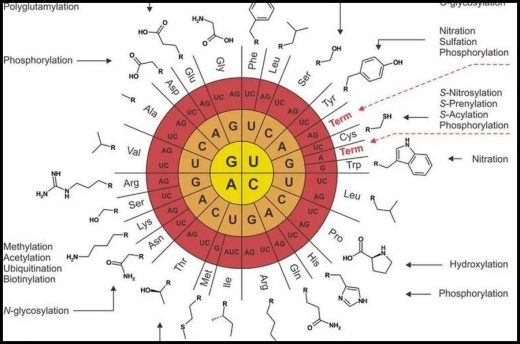As everyone knows, the genetic code is a chemical code that determines what a living thing will be, what it will look like, how its structures are formed and how it will function, and it is stored in our genes. The sequence of chemicals in our genes, which are given nucleic acids, determines our genetic code. For example, humans have 3.2 billion nucleotides (a chemical compound consisting of nucleic acid + phosphorus + sugar).
While this number is expressed in tens of billions in some living things, it may decrease to several million in others. While this number is not a sign of development (that is, having more nucleotides does not usually mean more advanced), the genetic code of many living things is quite complex. Genes formed by the combination of these nucleotides perform numerous tasks in our body by forming an intricate network.
These nucleic acids are read triplet by various enzymes (these triplet codes are called “codons”) and are converted into proteins within our organelles called ribosomes. These proteins have a wide variety of functions. Some of them structurally form parts of our body, some take part in the construction of other proteins, some determine our structural features such as hair and eye color, some affect our various behaviors, some help repair various structures, and more…
But how did this genetic code come into existence? Can we talk about the evolution of our genetic code? Of course we can, and many biochemists and evolutionary biologists are conducting extensive research on this topic. As far as experts have been able to determine so far, the genetic code, like every other feature of ours, is a product of biological evolution, it did not come into existence out of nothing. Our genetic codes in every cell in our body and in all other living things have evolved from simpler genetic codes that preceded them.
When we say this, it can be understood that we are talking about the simpler genetic code of our simpler ancestors. As we said, there is usually no direct relationship between the level of development and the number of nucleotides. However, when mutations that increase the number of nucleotides exponentially, such as gene duplications, are ignored, it would not be wrong to expect to find fewer nucleotides in organisms with fewer features.
However, “Our genomes have evolved from simpler genomes.” When we say that, we are not just talking about how the genomes of our ancestors (the whole genetic code of a living thing is called the “genome”) evolved to form us. We say that what we call the “genome”, that is, the genetic structure constructed as a result of the combination of nucleotides, evolved from a simpler code! In other words, we are talking about not only a biological evolution, but also a chemical evolution.
What does genetic decoding mean?
What do you think of the words ‘The genetic code of the human being is being deciphered’, which we started to encounter with the initiation of the Human Genome Project in 2000?
The genome is the entire genetic code of a living thing, in other words, it contains all the information necessary for a living thing to become that living thing. From the sex of the living thing to the rate of body hair, from the immune system to the number of teeth, almost every information about the living thing is contained in the genome. This information in the genome is used in the growth and development of the living thing from being a single-celled zygote and throughout its life, and the living thing is shaped according to this information. In the genome, this information is written in units called nucleotides.
The tricky point is that the genome is a book written without spaces. In order to derive meaning from a book, we need to separate words with spaces. Our letters in the genome are chemical sequences called “nucleotides”, while our words are clusters of nucleotide sequences called “genes”. Each gene carries a unique meaning. Different genes are involved in the expression of different characteristics for living things. Saying “the human genetic code is being deciphered” means that we have started to separate the words (that is, the genes) in the genome with spaces.
So what does this do for us? Control! The genes written in nucleotides in your genome are the cause of every biological trait that belongs to you. These biological features are included in many diseases from Alzheimer’s disease to tuberculosis, from heart diseases to asthma, from cancer to depression, as well as your eye color. The basis of many genetic studies carried out today is to find the genes that these diseases are related to and to treat the disease.
Visits: 195



